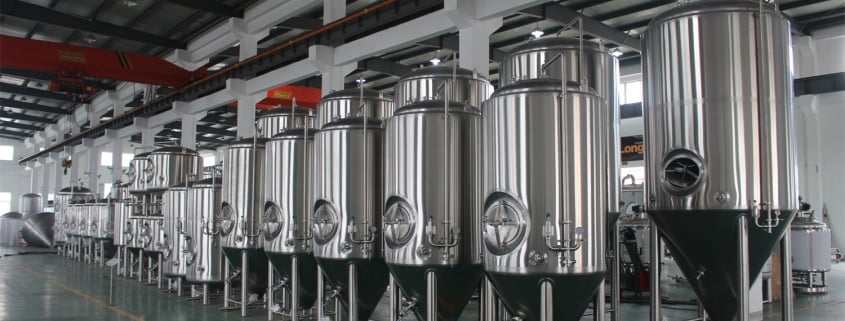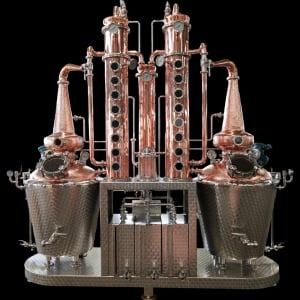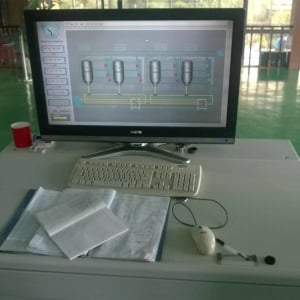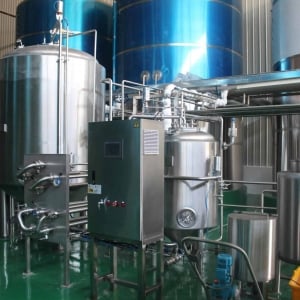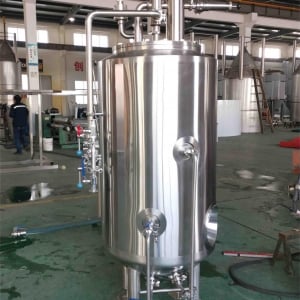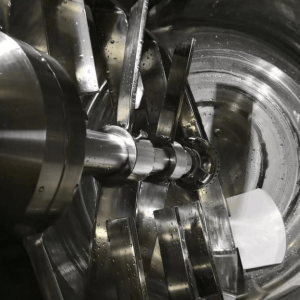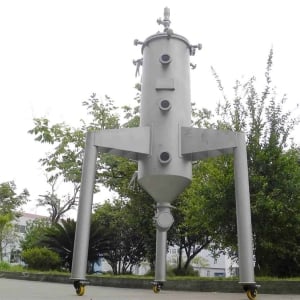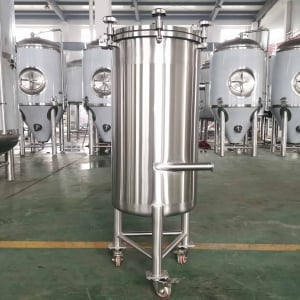30 Bbl Brewhouse
Imagine this: you’ve outgrown your homebrew setup, and the dream of a thriving brewery beckons. But before diving headfirst into a massive brewing system, a crucial decision awaits: selecting the perfect brewhouse size. Enter the versatile 30 bbl (barrel) brewhouse, a sweet spot for many aspiring breweries.
Unveiling the 30 Bbl Brewhouse
A 30 bbl brewhouse is the workhorse of the craft beer industry. It allows you to brew larger quantities than smaller systems, like 10 bbls, enabling you to meet growing demand and experiment with diverse styles. Compared to behemoth 100 bbl+ systems, a 30 bbl setup offers greater flexibility and keeps operational costs in check.
Here’s a breakdown of the key equipment that typically comes with a 30 bbl brewhouse:
| Equipment | Description |
|---|---|
| Mash Tun | The heart of the brewing process, where grains are steeped in hot water to convert starches into sugars. |
| Lauter Tun | Separates the sweet wort (sugar-rich liquid) from the spent grain after mashing. |
| Kettle | Boils the wort, concentrates it, and clarifies it by separating out hop trub (hops residue). |
| Whirlpool | Creates a whirlpool motion to further separate the wort from solids before fermentation. |
| Hot Liquor Tank (HLT) | Heats water for various stages of the brewing process. |
| Cold Liquor Tank (CLT) | Stores cold water for wort cooling and cleaning. |
| Pumps | Transfer liquids throughout the brewing process. |
| Control Panel | Monitors and regulates brewing parameters like temperature and flow rates. |
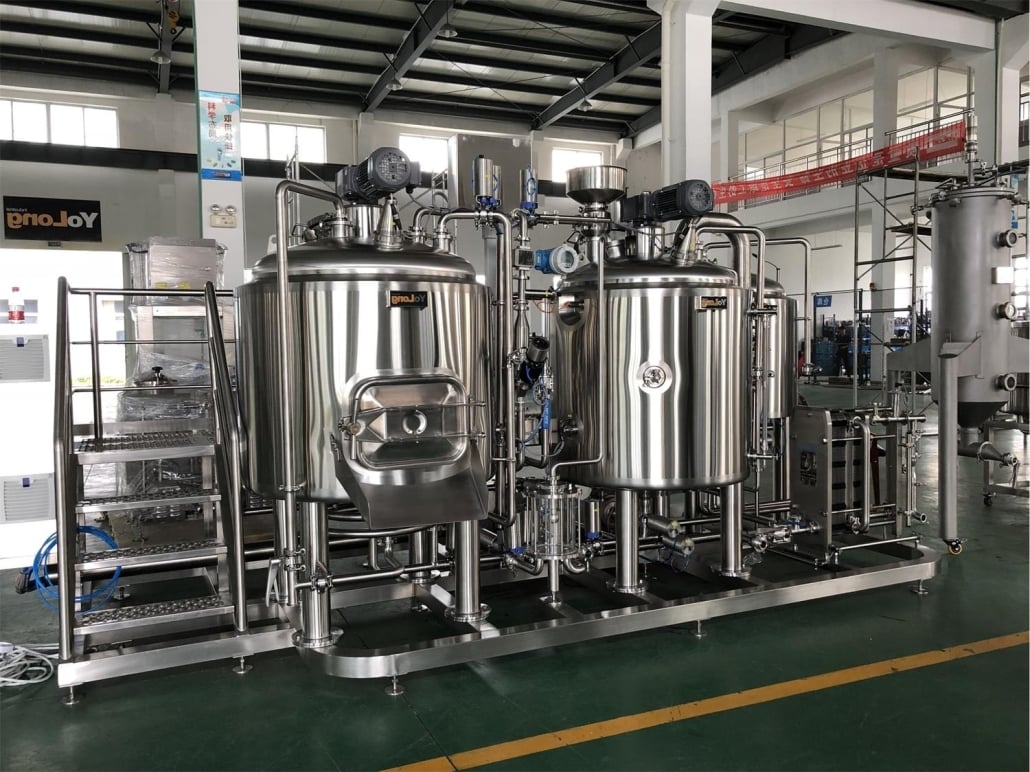
From Grain to Glass with a 30 Bbl System
The brewing process in a 30 bbl system follows the same core principles as smaller or larger setups. Here’s a simplified glimpse into the magic that unfolds:
- Mashing: Milled grains are steeped in hot water within the mash tun, converting starches into fermentable sugars.
- Lautering: The sweet wort is separated from the spent grains in the lauter tun.
- Boiling: The wort is transferred to the kettle and boiled with hops, adding bitterness, aroma, and flavor.
- Whirlpooling: The hot wort is spun in a whirlpool to further clarify it by separating out hop trub.
- Cooling: The wort is rapidly cooled down to prevent unwanted flavors and prepare it for yeast pitching.
- Fermentation: The cooled wort is transferred to fermentation tanks where yeast is added, transforming the sugars into alcohol and CO2.
- Conditioning: After fermentation, the beer undergoes a period of conditioning in tanks to allow flavors to mature and carbonation to develop.
- Packaging: The finished beer is then packaged into kegs, bottles, or cans for distribution and enjoyment!
Capacity, Design, and Customization
Space is a crucial consideration when choosing a 30 bbl brewhouse. Here’s a breakdown of some key factors to keep in mind:
Capacity:
- A 30 bbl brewhouse can typically produce around 30 barrels (or 900 gallons) of beer per brew.
- However, the actual output can vary depending on factors like the specific gravity of the wort and the efficiency of your brewing process.
Space Requirements:
- The footprint of a 30 bbl brewhouse will vary depending on the manufacturer and configuration, but generally, expect a space requirement of around 1,500 to 2,500 square feet.
- This space needs to accommodate the brewhouse equipment itself, as well as additional necessities like fermentation tanks, kegging lines, and cold storage.
Design and Customization:
- Many brewhouse manufacturers offer customization options, allowing you to tailor the system to your specific needs and preferences.
- This may include choices in heating methods (direct fire versus steam), vessel materials (stainless steel grades), and automation levels.
30 Bbl Brewhouse Cost Considerations
The price of a 30 bbl brewhouse can vary significantly depending on several factors, including:
- Manufacturer: Different brands have varying pricing structures.
- Features: More advanced features like automated control systems will drive up the cost.
- Materials: The grade of stainless steel used will impact the price.
- Customization: Any modifications or add-ons you choose will add to the overall cost.
- Location: Shipping and installation costs can vary depending on your brewery’s location.
Here’s a table outlining a general price range for 30 bbl brewhouses:
| Price Range | Description |
|---|---|
| $250,000 – $500,000 | This range represents a basic 30 bbl brewhouse setup with essential features from a reputable manufacturer. |
| $500,000 – $750,000 | In this range, you can expect more advanced features like automated controls, higher-grade stainless steel, and potentially some customization options. |
| $750,000+ | This upper range caters to highly customized systems with top-of-the-line features and potentially additional brewing equipment like a brewpub setup. |
Remember: It’s crucial to factor in additional costs beyond the base price of the brewhouse itself. These may include:
- Installation: Expect professional installation fees from the manufacturer or a qualified third-party contractor.
- Permits and licensing: Obtain necessary permits and licenses for operating a brewery in your area.
- Utilities: Factor in ongoing utility costs for water, electricity, and potentially natural gas (depending on your heating method).
- Brewing supplies: This includes malt, hops, yeast, and other ingredients needed for your brewing endeavors.
Installation, Operation, and Maintenance
Choosing a reliable supplier is paramount for a smooth and successful brewing journey. Here’s a table outlining key factors to consider when selecting a 30 bbl brewhouse supplier:
| Selection Criteria | Description |
|---|---|
| Reputation and experience: Research the supplier’s track record and experience in designing and building quality brewhouse systems. | |
| Equipment quality: Evaluate the materials, construction methods, and overall quality of the brewhouse components. | |
| Warranty and after-sales support: Ensure a comprehensive warranty on the equipment and readily available after-sales support from the supplier. | |
| Scalability: Consider if the brewhouse design can accommodate future growth if you plan to expand your production capacity. |
| Customer service: Choose a supplier with a reputation for excellent customer service and responsiveness to inquiries.
Once your 30 bbl brewhouse is installed, here’s a quick rundown of operation and maintenance:
- Operation: Familiarize yourself with the brewhouse control system and proper brewing procedures to ensure efficient and consistent beer production.
- Maintenance: Regularly clean and maintain your brewhouse equipment to prevent breakdowns and ensure optimal performance.
Choosing the Right 30 Bbl Brewhouse
Selecting the right 30 bbl brewhouse requires careful consideration of several factors. Here’s a table summarizing these key points to guide your decision:
| Selection Factors |
|---|
| Production goals: Determine your initial and projected brewing needs to ensure the brewhouse capacity aligns with your goals. |
| Available space: Accurately measure your designated brewing space to ensure the chosen brewhouse fits comfortably. |
| Budget: Establish a realistic budget for the entire project, including the brewhouse, installation, and additional costs. |
| Features and customization: Decide on the essential features you need and explore potential customization options. |
| Scalability: Consider your future growth plans and choose a brewhouse that can accommodate potential expansion. |
Pros and Cons of a 30 Bbl Brewhouse
Pros:
- Increased production capacity: Compared to smaller systems, a 30 bbl brewhouse lets you produce larger batches of beer, catering to a wider audience and fulfilling higher demand.
- Greater flexibility: The 30 bbl size offers more flexibility than mammoth systems, allowing you to experiment with diverse beer styles without immense production runs.
- Cost-effective: A 30 bbl brewhouse strikes a balance between production capacity and initial investment compared to larger systems.
- Scalability: Many 30 bbl brewhouses offer modular designs that can be expanded upon in the future as your brewery grows.
Cons:
- Space requirements: A 30 bbl brewhouse necessitates a dedicated space, so ensure you have the necessary square footage to accommodate it.
- Higher upfront cost: While more cost-effective than colossal systems, a 30 bbl brewhouse still represents a significant investment.
- Potential for inefficiencies: If your production needs are very small, a 30 bbl system might lead to underutilization and potentially higher operating costs per unit of beer produced.
Essential Considerations for Aspiring Brewers
While the 30 bbl brewhouse is a critical component, remember it’s just one piece of the puzzle. Here are some additional factors to consider for a successful brewery operation:
- Fermentation tanks: You’ll need enough fermentation tanks to accommodate your desired batch size and production schedule.
- Kegging/bottling/canning line: Choose a filling system based on your packaging preferences (kegs, bottles, or cans).
- Cold storage: Adequate cold storage is essential for proper beer conditioning and maintaining a steady inventory.
- Business plan and licensing: Develop a comprehensive business plan and obtain all necessary licenses and permits to operate your brewery legally.
- Marketing and branding: Craft a strong brand identity and develop effective marketing strategies to reach your target audience.
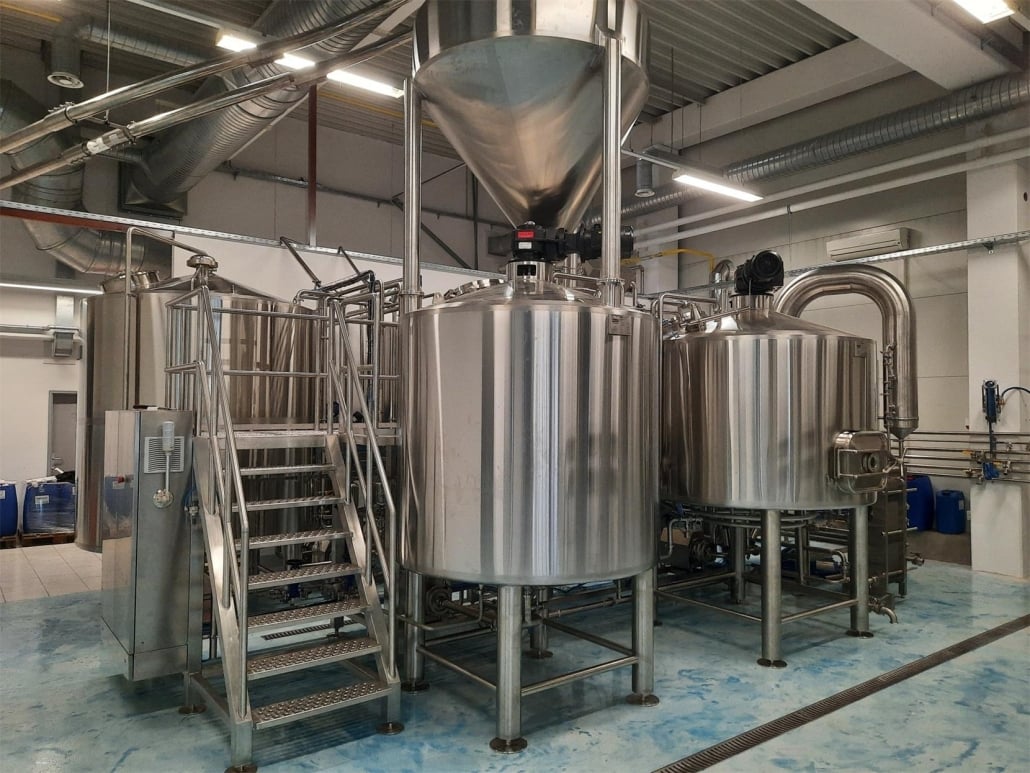
FAQ
Here’s a table addressing some frequently asked questions (FAQs) about 30 bbl brewhouses:
| Question | Answer |
|---|---|
| How much beer can a 30 bbl brewhouse produce? | A 30 bbl brewhouse can typically produce around 900 gallons of beer per batch. The actual output can vary depending on factors like wort gravity and brewing efficiency. |
| What size space do I need for a 30 bbl brewhouse? | Generally, expect a space requirement of around 1,500 to 2,500 square feet to accommodate the brewhouse equipment and additional necessities. |
| How much does a 30 bbl brewhouse cost? | The price range can vary from $250,000 to $750,000+ depending on features, materials, customization, and supplier. Factor in additional costs like installation, permits, and utilities. |
| What are the advantages of a 30 bbl brewhouse? | Increased production capacity, greater flexibility for recipe exploration, cost-effectiveness compared to larger systems, and potential for scalability. |
| What are the disadvantages of a 30 bbl brewhouse? | Space requirements, significant upfront investment, potential for inefficiency if production needs are very low. |
| What else do I need besides the brewhouse to start a brewery? | Fermentation tanks, filling line (kegging/bottling/canning), cold storage, business plan with licenses, and a marketing strategy. |
Conclusion
The 30 bbl brewhouse offers an enticing proposition for aspiring brewers seeking to scale up their production. It provides the capacity to meet growing demand without the colossal footprint and expense of larger systems. Remember, selecting the right brewhouse hinges on a thorough understanding of your production goals, available space, and budget. By carefully considering these factors and partnering with a reputable supplier, you can transform your brewing dreams into a reality, one delicious craft beer at a time.

